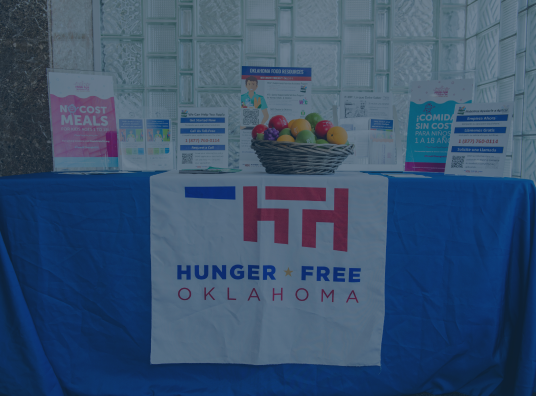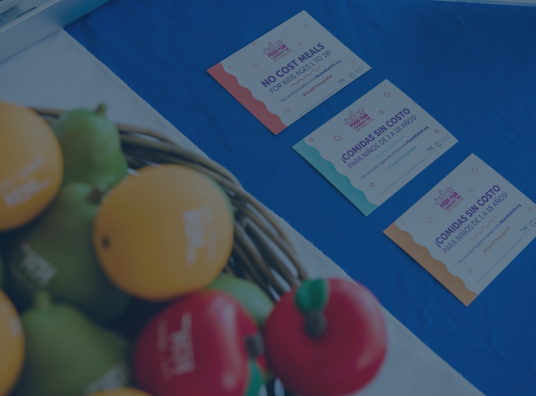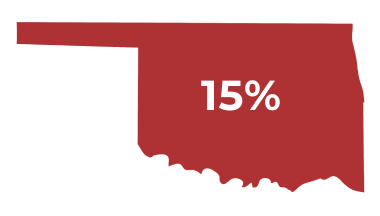Hunger Matters
- Hunger costs Oklahoma over $1.4 billion each year through increased illness and decreased academic achievement alone.
- Food insecurity exacerbates chronic illnesses including kidney disease, hypertension, diabetes, and obesity.
- Hunger leads to low birth-weight, delayed development, and decreased language acquisition.
- Food insecure children are more likely to have lower reading and math scores, more significant behavior and social problems, and lower high school graduation rates.
- Food insecurity weakens the labor force, decreases educational attainment, and increases healthcare costs in Oklahoma.
- 33% of Oklahomans live in a Low-Income, Low-Access (LILA) community, meaning they lack adequate access to nutritious food; that number increases to 42% when looking at urban households, while 32% of rural households live with limited access.
14.5%
of Oklahoma households are food insecure
67%
of SNAP participants are children, elderly, or disabled
Oklahoma Food
Insecurity
Oklahoma has some of the worst food insecurity statistics in the nation. Food insecurity, as defined by the USDA, is a household-level economic and social condition of limited or uncertain access to adequate food.

6%
of Oklahoma children
in need participate in
the Summer Meals
Program
More than 1 in 5 (208,110) Oklahoma children don’t get the food they need
Every $1 of SNAP benefits puts $1.70 back into Oklahoma’s economy
We are only 1 of 5 states that has a food insecurity rate of higher than 14.5%
800,000 Oklahomans relied on SNAP at some point during 2019 to meet their basic nutritional needs
Hunger is Solvable
Oklahoma has some of the worst food insecurity statistics in the nationFood insecurity, as defined by the USDA, is a household-level economic and social condition of limited or uncertain access to adequate food.
Sustainable solutions to hunger exist and require public-private partnerships to increase efficiency and help communities address local issues.
Percentage of students who qualify for free or reduced-price meal (SY 2019-2020)

39.8%
of eligible children
between 1 and 5 years
benefit from
supplemental nutrition
provided by WIC
Our statewide assessment of hunger identifies three underutilized programs that could help families become food secure. Learn more about these programs and what we are currently leaving on the table by viewing our report here. To learn how Hunger Free Oklahoma is helping Oklahoma address these issues explore the options under the Community Partners menu at the top of this page.
By not fully utilizing these crucial programs, Oklahoma leaves hundreds of millions of dollars on the table to fight hunger every year.
Percent of eligible schools offering all
students no-cost school meals through CEP


